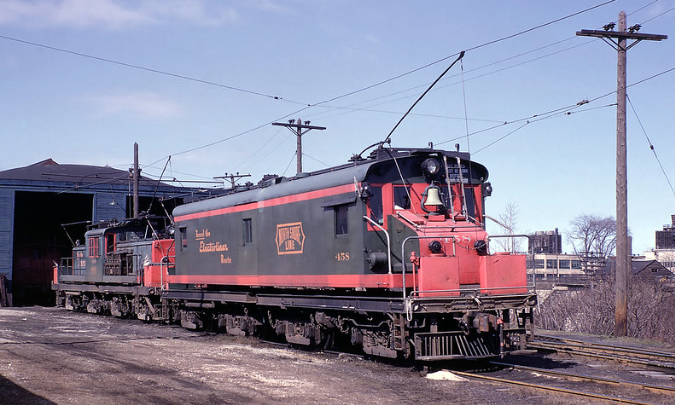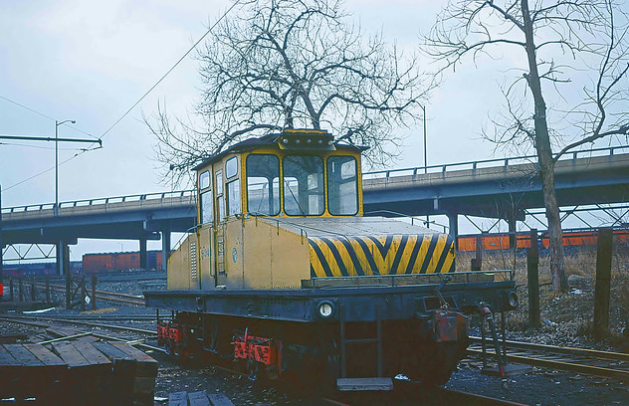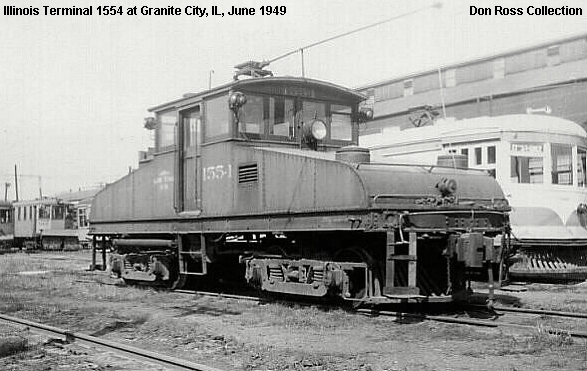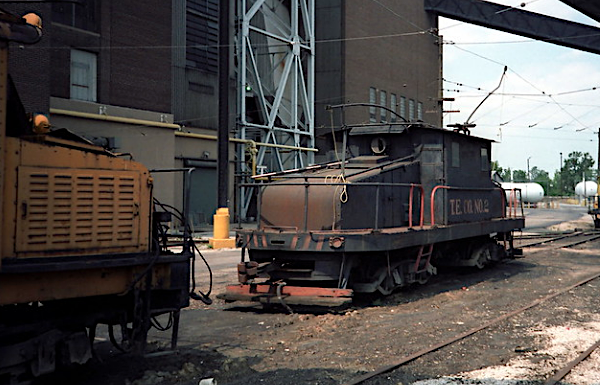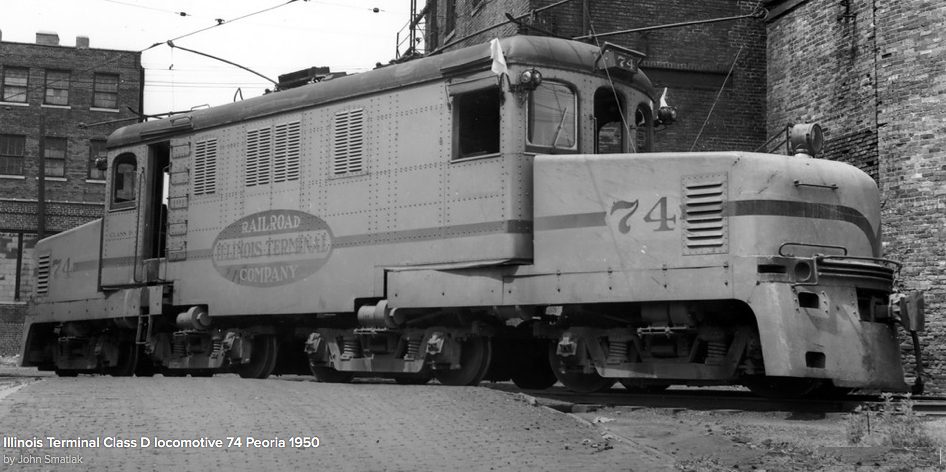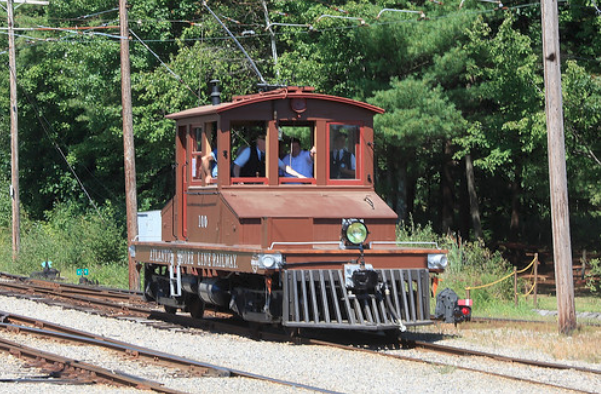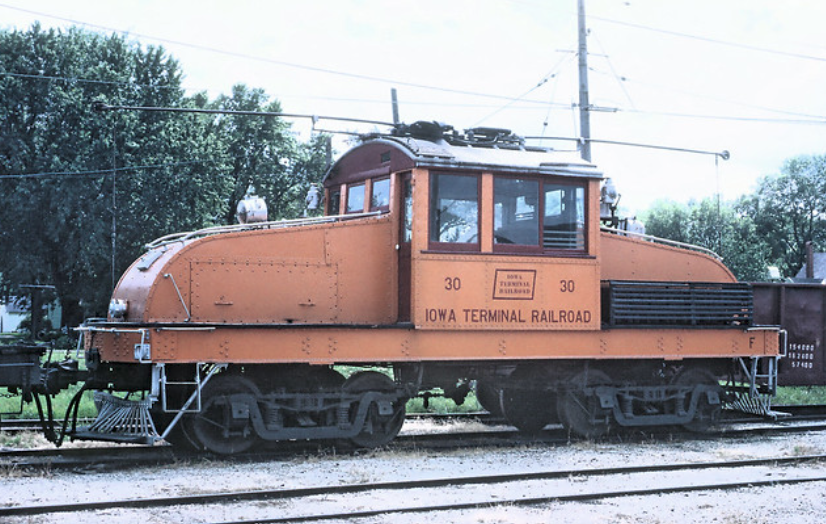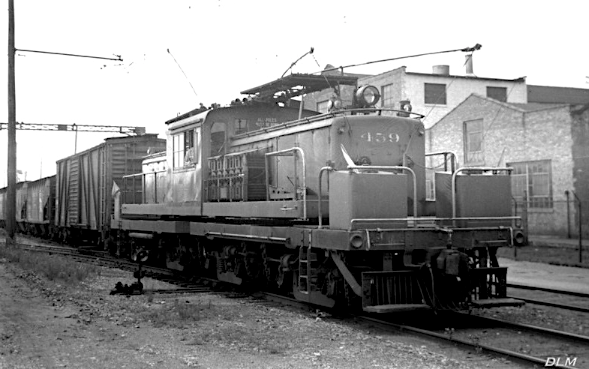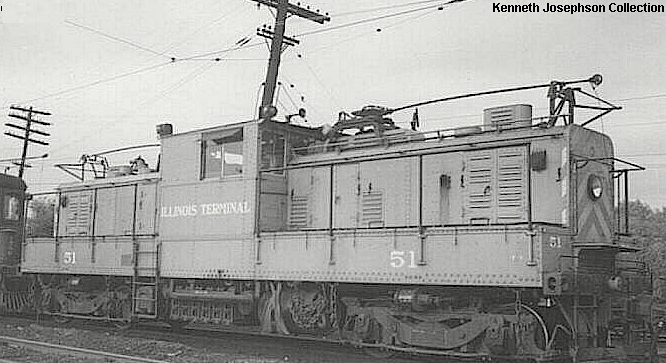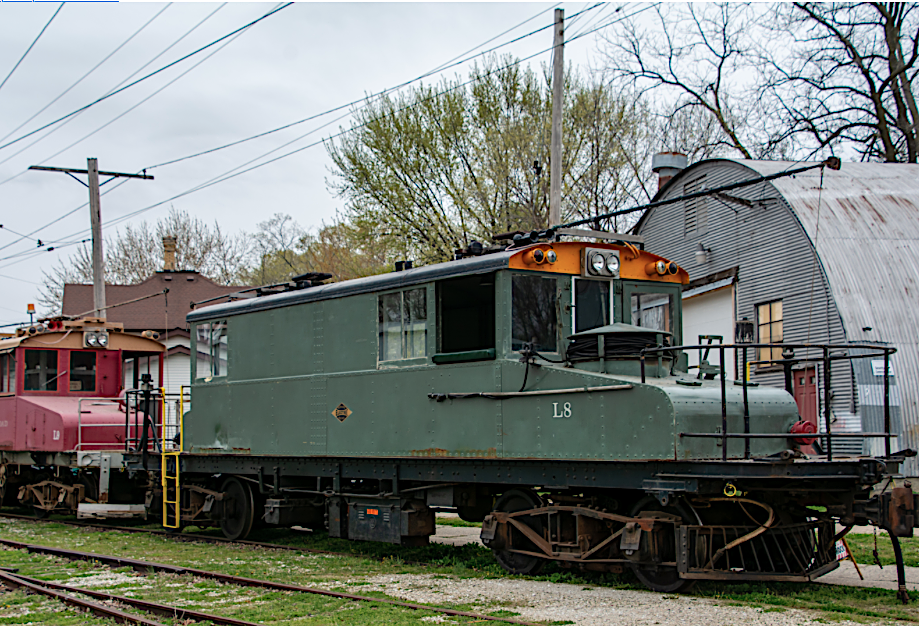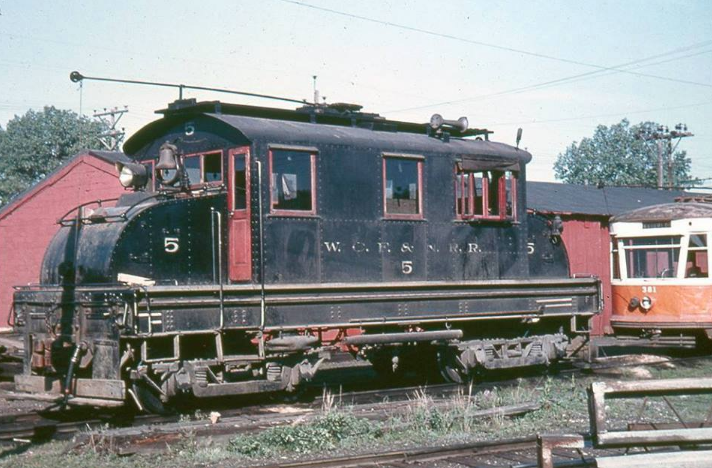Other Builders of Steeple Cab Electrics
Chicago North Shore & Milwaukee #458 & 459 at North Chicago on 15 April 1962 (Marty Bernard photo) | |||||
|---|---|---|---|---|---|
|
Baldwin Locomotive Works (BLW) and General Electric (GE) were without argument the two major
builders of steeple cab electrics. They however were not the only builders as was briefly
illustrated in last month's Pacific Electric profile. The Southern California interurban
produced several different models based on the design of other builders, and with various
horsepower ratings.
Although copying another builder's design was not wide-spread, a few well-known electric
railways found it advantageous and expedient. Interestingly, patent laws did not seem to
outwardly discourage the practice nor did BLW or GE voice loud objetions. This tendency
helps explain the strong resemblance of electric steeple cab locomotives produced by various
builders and those that were home-built by railroad shops.
Regardless of builder, 600 & 1200-volt direct-current power for traction motors and controls
were the preferred systems. The reasons were typically economic-based: Trucks and motors were
readily available, parts inventory costs could be kept to a minimum, maintenance requirements
were simplified, and the need for additional re-training minimized.
The following locomotive photos are representative of the many electric steeple cab builders
during the early 1900s through the 1930s. Short-line railways and interurbans by the late-1920s
had only a modest need for new electric locomotives, and production dwindled to a close.
However, there were a number of large steeple cab electrics build for western mining operators.
Next month, the focus will be on conventional box cab production. |
|||||
* * * Photo Gallery * * *
Baltimore & Ohio #14 was one of ten electric freight motors built between 1909 and 1912 to haul tonnage on the Belt Line, which included the historic Howard Street Tunnel. The electrics drew power from a 675-volt d.c. third rail system. Diesels replaced the electrics on passenger and freight trains in 1946 and 1952 respectively. (Bill Volkmer collection / courtesy of Don Ross) |
The Chicago City Railway shop built 1908-vintage electric locomotive #L202 as a light yard switcher. The home-built unit was transferred to the Chicago Surface Line and then CTA where it was eventually re-built. Retirement came in 1958 as did a permanent relocation to the Illinois Railway Museum. (Chuck Zeiler photo) |
Cincinnati Car Company was a long-time builder of interurban cars and freight/express motors, and the Ohio company was not generally known for its production of electric locomotives. (An internet search of rosters and photographs produced this photo from the Indiana Historical Society) |
One of the lesser known electric locomotive builders was the Danville (Illinois) Car Company, which produced a dozen freight motors for Illinois Terminal, in the 37 to 42-ton range. IT #1554 pictured here was delivered in 1907 and comparatively short (32 feet) when contrasted to other Class A electrics of the time. (Photographer unknown / Don Ross collection) |
British Columbia Electric Railway #990 and sister 991 were built in Scotland by Dick, Kerr & Co., an old-line manufacturer of industrial equipment, trams and locomotives. The two foreign- built electrics were delivered in 1909. (Don Ross collection) |
Built in 1924 for Toledo Edison, electric motor #2 was one of four steeple cabs operated by the Acme Generating plant, along the Maumee River. While the #2 unit was purchased direct from the builder, the others were acquired second-hand and carried Baldwin builder plates. (John Smatlak photo) |
Monstrous in size (55-feet-long), Illinois Terminal #74 was a composite loco created in 1942 by the railroad's Decatur Shop. The articulated home-built was driven by eight traction motors of various ratings (150V, 300v and 600v); it was retired in the mid 1950s. (Don Ross collection) |
Atlantic Shore Line #100 was one of three identical 320-hp locomotives built in 1906 to haul freight on the 87-mile railway in Maine. The only survivor, the restored steeple-cab (wood carbody and steel under-carriage) now resides at the Sea Shore Trolley Museum. (Photographer unknown) |
This little center cab was built by McGuire-Cummings in 1915 and spent its entire revenue generating career working initially for Charles City Western and later for the Iowa Terminal, another midwest-based interurban. After retirement, the electric motor went to the Illinois Railway Museum, where it still remains. (Roger Puta photo / Marty Bernard collection) |
Completed in 1901, this small home-built was driven by a 550-volt, direct-current overhead; it was sold after a dozen years to Niagara St. Catherines & Toronto. Retirement came in 1946 while working for the Cornwall Street Railway as #7; it now resides at Exporail in Canada. (Michael Berry photo) |
Although resembling the McGuire-Cummings unit (above), the builder for this Canadian steeple cab was National Steel Car Company. Constructed in 1918, the small center cab was delivered to Hydro Electric Power and later sold to Niagara St. Catherines & Toronto Railway as their #17. It was subsequently sold to Oshawa Railway. (Photo Bill Volkmer collection / courtesy of Don Ross) |
Chicago Auorora & Elgin #4005 was home-built in 1929. The 400-hp "Class D" locomotive's path to CA&E ownership included stops at the United Electric Railways and the Cedar Rapids & Iowa City interurban. (John Smatlak photo) |
Chicago Auorora & Elgin #4005 was home-built in 1929. The 400-hp "Class D" locomotive's path to CA&E ownership included stops at the United Electric Railways and the Cedar Rapids & Iowa City interurban. (Photographer unknown / Don Ross collection) |
Generally speaking, St.Louis Car was not known as a "locomotive" builder. However the few locos the midwest manufacturer produced were certainly notable; Illinois Terminal #51 is one such example. The 49-foot-long, dual-mode electric was driven by a 300-hp Buda engine, with supplemental storage batteries. (Kenneth Josephson collection / courtesy Don Ross) |
The Milwaukee Electric Railway & Light company was a prolific builder of electric interurban cars, freight motors and locomotives. One of the largest TMERL creations was the double-truck #L8. The 1935 steeple cab loco stretched 48 feet which facilitated an elongated cab. The unique electric motor resides at the East Troy Railway Museum in Wisconsin. (Jenny McCarthy photo) |
The Waterloo (Iowa) shops of the WCF&N railway built steeple cab #5 in 1912. In what might be considered a reversal of roles, Baldwin built WCF&N #6 a slightly longer and heavier version in 1927. Both units were scrapped in 1957. (Darren Ferreter photo / Don Ross collection) |
This photo could arguably have been shown in the prior Baldwin steeple cab discussion. A few sources suggest Westinghouse was the prime contractor with BLW in the role of supplier. A 1940s Westinghouse brochure supports that belief. Nonetheless, Phelps Dodge #13 is shown here at the New Cornelia Mine in Arizona during the mid 1950s. The dual-mode locomotive was driven by 850-volt d.c. overhead and storage batteries, which were later replaced by small diesel engines. (Westinghouse Catalog) |
Notes & Credits:
Reference sources:
|
